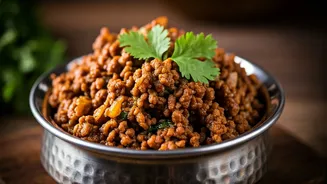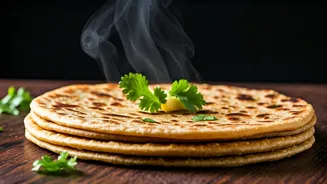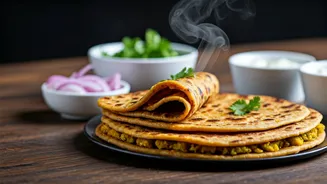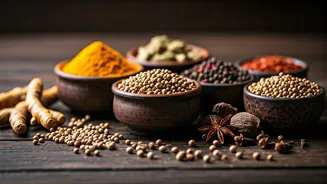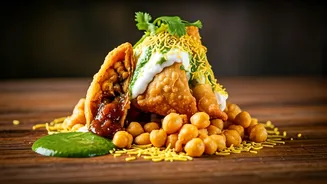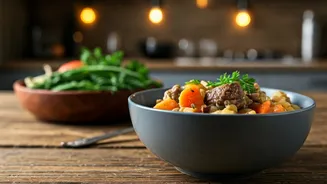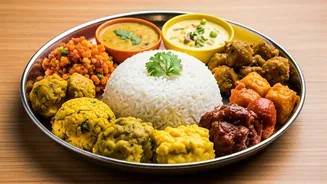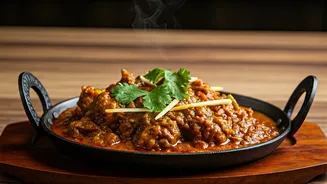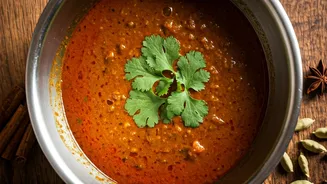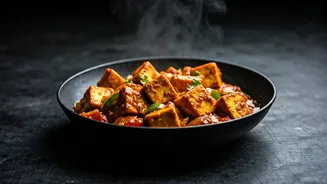Keema: The Basics
Keema, a staple in Indian cuisine, is essentially minced meat, typically lamb or mutton, though other meats like chicken or beef can be used. The essence
of a good keema dish lies in the quality of the meat and the balance of spices. The process involves sautéing the minced meat with a fragrant blend of spices, onions, tomatoes, and sometimes, other vegetables like peas or potatoes. The cooking style varies across regions, offering a diverse range of flavors. The keema is often enjoyed with roti, paratha, or rice, making it a versatile dish for any meal. The versatility of keema allows cooks to adapt recipes based on regional preferences or the available ingredients. Common spice additions include ginger-garlic paste, turmeric, coriander powder, and garam masala, each contributing to the complex flavor profile. The dish's simplicity allows for customization, allowing cooks to adjust the spice levels or include vegetables as desired, ensuring a delightful culinary experience every time.
Meat Selection Matters
The flavor of your keema largely depends on your meat choice. Lamb or mutton is the traditional choice, delivering a rich and robust taste. The quality of the meat directly impacts the final dish. Ensure the meat is fresh, and that it comes from a trusted source. If you prefer a leaner dish, you can opt for chicken keema. Beef keema is also a possibility, but the flavor profile will differ. When selecting meat, ask your butcher to mince it finely for the best texture. The fineness of the mince is crucial for the flavors to blend well. Consider the fat content; a bit of fat adds flavor and prevents the keema from drying out during cooking. Experimenting with different cuts, even within the same meat type, can lead to discovering your ideal keema. Look for meat with a good color, indicating freshness. Avoid meat that appears discolored or has an unpleasant odor, as this could spoil the dish. Choosing the right meat will ensure the success of your keema preparation.
Spice Symphony Creation
The spice blend defines the flavor of keema. A typical keema recipe includes a mix of both whole and ground spices. Essential spices include ginger-garlic paste, turmeric powder, coriander powder, cumin powder, and chili powder. Some recipes add garam masala for a deeper, richer taste. The amount of chili powder can be adjusted based on your spice preference. For a more aromatic keema, consider adding whole spices to the oil first. This allows the flavors to infuse the oil before the meat and other ingredients are added. Consider using fresh ingredients whenever possible. The freshness of the spices can significantly impact the taste. To toast whole spices lightly, you can release their oils and enhance their flavor. Be mindful of the order in which you add the spices. Overcooking spices, especially the ground ones, can make the keema bitter. The quality of your spices impacts the taste of the dish. When buying spices, always check their sell-by date to ensure they're fresh.
Cooking Process Revealed
The keema preparation involves several key steps to achieve the best results. Begin by heating oil in a pan, then add whole spices, if using. Sauté onions until they turn golden brown, then add ginger-garlic paste and cook until the raw smell disappears. Next, add the minced meat, breaking it apart with a spoon. Cook the meat until it changes color. Add the spice powders, tomatoes, and any vegetables. Stir well to combine everything. Add a splash of water to prevent burning, and then simmer. The cooking time varies based on the meat type, but it's typically ready when the meat is tender and the oil separates from the spices. Keep an eye on the liquid level and add more water if necessary to prevent sticking. Garnish with fresh coriander leaves and serve hot. Properly browning the meat is essential for developing a rich taste. Stir the keema often during the cooking process to prevent sticking. The cooking time will vary. Using a lid can help to retain moisture and cook the meat effectively. The ideal keema has a rich, thick sauce that clings to the meat.
Serving & Enjoying
Keema is a versatile dish that can be served in numerous ways. It is traditionally enjoyed with roti or paratha. You can also serve it with rice. Add a dollop of plain yogurt for a cooling contrast. For an extra touch, you can sprinkle fresh coriander leaves on top. Consider making a side of raita to complement the dish. Leftover keema can be used in various other recipes. It makes a delicious filling for samosas or a flavorful addition to biryani. The serving style should consider the occasion and preferences. Serve it in a way that enhances the dining experience. Consider the accompaniments alongside the keema to complement the dish. Keema is best enjoyed when hot, fresh from the pan. Be creative with your serving presentation to enhance the dining experience. Keema allows for different food combinations.
